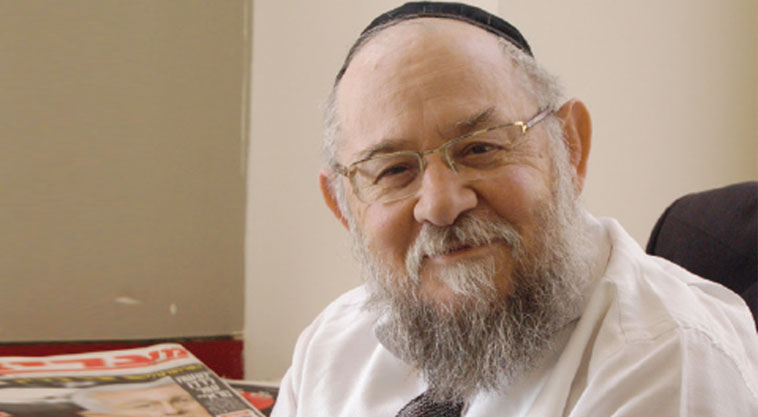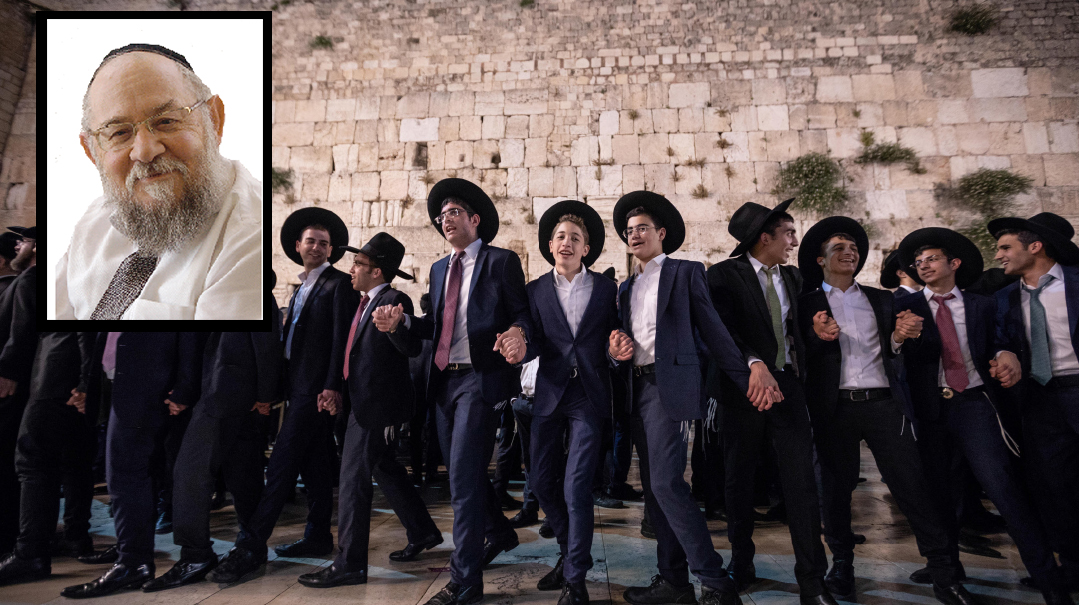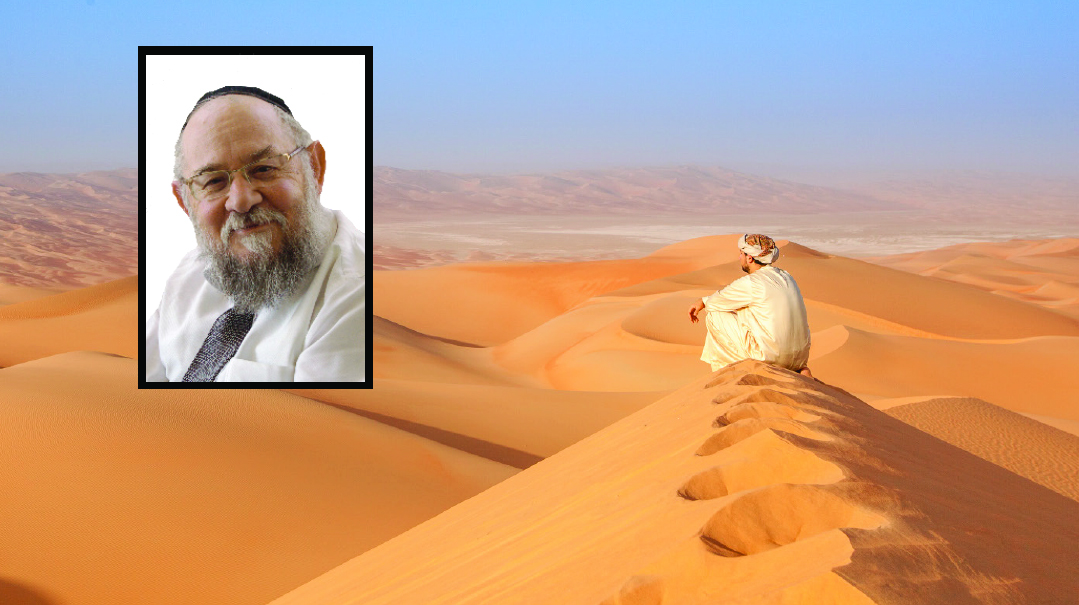Joint Effort


P arshas Terumah is a point of takeoff where we leave the solid ground of straightforward narrative and soar to the heights of allegory and hidden meanings. This parshah talks about the Mishkan about the spiritual life of Bnei Yisrael in the Wilderness. Although the immediate reason for the construction of the Mishkan is clearly stated in the pasuk “And they shall make Me a Sanctuary and I shall dwell in their midst” (Shemos 25:8) even the most pshat-loving of the commentators have sought to delve into its esoteric meaning.
What made these mefarshim shift their approach? They were surprised by the fact that most of the pesukim in this and the following parshiyos present no new information. They repeat the same story sometimes verbatim that has already been told; in fact the basic narrative of the Mishkan is told five times in the Torah.
There is no parallel to this in the Torah which is well known for its succinctness. What’s more this plenitude of verses is devoted to a structure that was very short-lived from a historical perspective. Bnei Yisrael were in the Wilderness 40 years and another 440 years in Eretz Yisrael until Shlomo Hamelech built the First Temple. What is the significance of this temporary structure that made the commentators so keen to plumb its hidden depths? G-d created the world for man’s sake and man created the Mishkan as a focal point for G-d’s Presence in this world. Thus the mysteries of both man and the Mishkan are bound together in the mystery of Creation itself and this is clearly relevant for all generations until (and including) the Messianic era.
The Ark one of the Mishkan’s central features was constructed of acacia wood and it was covered and lined with gold (ibid. 10–23). Bnei Yisrael’s life in the wilderness revolved around the Ark which held two tablets of stone the Shnei Luchos HaBris on which the Ten Commandments were engraved. Underneath these tablets were fragments of stone — the shards of the first Tablets that Moshe broke when he descended from Har Sinai and saw the people encircling the Golden Calf they’d made in his absence. A Torah scroll was also placed in the Ark alongside the Luchos.
The Ark stood inside a booth called the Kodesh Hakodoshim screened off from the rest of the Mishkan by the Paroches. No one dared set foot there except for the Kohein Gadol who was permitted to enter on Yom Kippur at the climactic point of the sacrificial services. His entry into the Kodesh Hakodoshim signaled the moment of forgiveness and atonement a renewal of the bond between G-d and His People.
From the Kapores (ibid. 17) the top cover of the Ark where the two golden keruvim stood Hashem revealed His word to Moshe: “I will appoint My meetings with you there and I will speak with you from atop the Kapores… upon the Ark” (ibid 22). From here Hashem spoke to Moshe and through him to the entire Jewish People. From here the nation was sanctified as G-d’s people and from here its character was shaped and its destiny determined.
Thus the Jewish People learned from the beginning of its history as a nation that contrary to the belief systems they were exposed to in Egypt and would later encounter in Canaan there is no kedushah in objects but only in the word of G-d. There is no inherent value to a sacred place to any land any regime any calf any demigod from Pharaoh to Stalin (or any human idol outside the political arena) if they contradict the truths of the spirit in any way. Accordingly placed in the Ark at the center of the people’s life at the focal point of kedushah itself were the Luchos that bore His Word and nothing more. In this way the word the concept the vision of the G-dly ethic and its implementation penetrated deep into the nation’s consciousness. Upon entering the Land of Canaan their destined homeland their society would be grounded in this ethic.
With the destruction of the Beis Hamikdash the Ark — and the Tablets of the Law contained within it — disappeared. What happened to them is unknown but we do still have our holy Torah scrolls.
Since the Ark reflects the presence of Hashem in the midst of the people as revealed by the Torah then all the meanings concealed within the pesukim describing the Ark can also be applied to the Torah as the word of G-d.
Many of the Divine commands regarding the construction of the Ark differ from what is said regarding other features of the Mishkan. Let us examine one of these commands. The first verse pertaining to the Ark is: “And they shall make an Ark of acacia wood” (ibid. 10).
The Midrash notes a grammatical anomaly here: “Why regarding the rest of the furnishings does it say ‘v’asisa (you shall make ’) in the singular while regarding the Ark it says ‘v’asu (they shall make ’) in the plural?”
A good question. The difference in language undoubtedly points to a difference in the underlying message.
The Midrash answers: “HaKadosh Baruch Hu said to him ‘Let them all come and engage in working on the Ark so that they may all have the merit of Torah’ ” (Shemos Rabbah 34:2).
Midrash Tanchuma (Vayakhel 4) goes into greater detail: “HaKadosh Baruch Hu commanded all of Israel to make it so that no one would be able to say to the other ‘I gave a lot for the Ark and therefore I learn a lot and I have a greater part in it than you.’ ”
In other words Hashem did not want there to be classes in Jewish society — people of “better” lineage than others “fine people” and “not-so-fine people” — when it comes to Torah the inner essence of the Jewish People such stratification is dangerous. The Torah’s gates are open before every ben Yisrael and therefore everyone must have an opportunity for and equal hand in it.
This being so no individual or social stratum is able all by itself to fulfill the entire Torah. “The body of the Torah cannot be fulfilled except through the whole of Klal Yisrael” (Ohr HaChaim). The 613 mitzvos are built in such a way that only a partnership of all sectors of the nation can fulfill them. An Israelite is barred from performing many mitzvos that are the province of the Kohanim for example. On the other hand the Kohein due to his special role cannot perform some of the mitzvos that the Israelites are commanded to fulfill. There are mitzvos that only women can do and without wives to fulfill these mitzvos the men would be lacking this portion of the Torah.
No one in the Jewish nation is complete without his fellow Jew. No group can appropriate Shabbos for itself; it belongs either to the whole nation or to no one — for the Torah does not belong to individuals but to the nation and this is the truth that was expressed with the building of the Mishkan in the Wilderness. Everyone had to contribute equally to its construction the simple folk and the highly placed came together to take on the task of the Ark in order to inculcate in their hearts the message of their shared destiny and interdependence. For the people need to know that when the Torah is placed before them the pride of the well-connected has nothing to rely on. Not when the Mishkan was built in the Wilderness and not now.
Oops! We could not locate your form.




